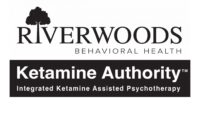
In the digital age, it's high time we explore how ancient wisdom and modern science converge, particularly in the realm of mental health. We're keen to guide you through the process of integrating ketamine into somatic therapy—a journey that promises to unlock new doors for healing and understanding.
From preparing for the initial session to navigating the intricacies of aftercare, we've distilled our expertise into actionable steps. But before we embark on this path together, it's crucial to grasp why ketamine, a substance once known only within medical or recreational contexts, now holds the key to transformative therapeutic practices.
Stay with us, as we uncover the potential that lies in this unique integration.
Understanding Ketamine's Role
Ketamine's role in somatic therapy has emerged as a significant breakthrough, offering new hope for treating various mental health conditions. We've discovered that this powerful medication, initially used as an anesthetic, now plays a crucial role in somatic therapy by enabling deeper emotional and physical relief. It's fascinating to see how it helps patients confront and process trauma that's deeply embedded in their bodies, which traditional therapies sometimes struggle to reach.
We've seen firsthand how ketamine, when integrated into therapy, can create a safe space for patients to explore their inner experiences. Its ability to induce a dissociative state allows individuals to detach from their immediate surroundings and delve into their subconscious, facilitating a profound healing process. This is particularly beneficial for those grappling with depression, PTSD, and anxiety, offering them a path towards recovery that wasn't previously available.
Moreover, ketamine's rapid action is a game-changer. Unlike traditional antidepressants that may take weeks to show effects, ketamine can offer relief much sooner, which is vital for individuals in acute distress. This quick response can be a lifeline, providing immediate relief and a glimpse of hope for those who've felt stuck in their healing journey.
Preparing for Ketamine Sessions
Before integrating ketamine into somatic therapy, it's crucial we understand the preparatory steps involved to ensure a safe and effective session. First, we need to conduct a thorough medical and psychological assessment of our clients. This includes checking for any contraindications to ketamine use, such as certain psychiatric conditions or a history of substance abuse. It's essential we have a clear picture of our client's health and mental state before proceeding.
Next, we'll discuss with our clients what to expect during the session, including potential sensations and experiences. Setting the right expectations helps in reducing anxiety and fostering a therapeutic environment.
We also need to prepare the physical space. The environment should be comfortable, quiet, and safe, promoting a sense of calm and security. We'll ensure there are no disturbances and that the setting is conducive to relaxation and introspection.
Lastly, we'll review the session's structure with our clients, including the duration, the process of ketamine administration, and the role they play in their therapeutic journey. By doing so, we empower them to be active participants in their healing process, paving the way for a more impactful and transformative therapy session.
Conducting the Therapy Session
Once we've prepared both our clients and the therapeutic space, we initiate the ketamine therapy session by administering a carefully calculated dose. This is a pivotal moment where we transition from preparation to the therapeutic process itself. We ensure the setting is conducive to relaxation and introspection, often incorporating soft lighting, comfortable seating, and sometimes ambient music to foster a calming environment.
We then guide our clients through grounding exercises, helping them anchor their awareness in the present moment. This practice is crucial as it aids in cultivating a mindset receptive to the therapeutic effects of ketamine. We emphasize the importance of deep, steady breathing techniques to encourage a state of calm and centeredness.
As the session progresses, we're actively engaged in facilitating a supportive space for our clients. We're present to offer reassurance, validate their experiences, and gently guide their focus towards inner healing paths that may emerge. We're careful to maintain a balance between offering support and allowing ample space for the client's personal journey to unfold.
Throughout the session, we remain attuned to our clients' needs, ready to adjust our approach based on their comfort and the therapeutic goals we've set together. This careful, client-centered approach ensures that the ketamine therapy session is a safe, transformative experience.
Monitoring Patient Responses
Throughout the therapy session, we meticulously monitor our clients' responses to the ketamine, ensuring their safety and comfort at every step. We're constantly observing for both physical and psychological reactions, recognizing that each individual's experience with ketamine can be profoundly different. It's our responsibility to adjust the session accordingly, tailoring our approach to meet the unique needs of every client.
We pay close attention to vital signs, such as heart rate and blood pressure, which can offer immediate feedback on how the body is handling the ketamine. We're also tuned into subtler cues, like changes in facial expressions or body language, which can indicate shifts in emotional states. It's crucial for us to maintain an open line of communication, encouraging our clients to share their experiences in real-time, allowing us to gauge the depth of their journey and intervene if discomfort arises.
We've found that this vigilant monitoring plays a critical role in the therapeutic process. It not only ensures the physical well-being of our clients but also fosters a space where profound healing can occur. By remaining attentive and responsive, we're able to navigate the session dynamically, making adjustments as needed to support our clients' paths toward recovery.
Aftercare and Integration
After the ketamine therapy session concludes, we immediately begin focusing on aftercare and integration to ensure clients can fully process and benefit from their experiences. We understand that the journey doesn't end when the session does; it's just starting. That's why we provide a structured aftercare plan that includes follow-up appointments, tailored integration exercises, and accessible support from our team.
We encourage clients to journal their thoughts and feelings in the days following their session. This practice not only aids in processing the experience but also helps in recognizing patterns or insights that may emerge. We also recommend mindfulness practices, such as meditation or gentle yoga, to maintain a connection to the inner self that was explored during the session.
Our team is always ready to offer support through one-on-one integration sessions. These sessions are crucial for discussing any challenges, revelations, or questions that arise after the therapy. We ensure that every client feels supported, heard, and understood throughout their integration process.
Integration is about weaving the insights gained from the ketamine experience into daily life. It's a personal journey that we're honored to guide our clients through, ensuring they can translate their profound experiences into lasting change.
Frequently Asked Questions
Can Ketamine Therapy Be Used in Conjunction With Other Forms of Psychiatric Medication?
We've been wondering if ketamine therapy can work alongside other psychiatric meds. After digging into it, we found that it's a possibility, but it's really important to have a professional guide the process.
They'll consider interactions and tailor the approach to ensure safety and effectiveness. It's not a one-size-fits-all situation, and careful monitoring is key.
We're keen on exploring this further, always prioritizing safety and personalized care.
How Does One's Diet or Nutritional Intake Affect the Efficacy or Experience of Ketamine Therapy?
We're curious about how our diets impact ketamine therapy experiences. It seems logical that what we eat can influence the therapy's effectiveness, considering how closely nutrition and mental health are linked.
We've heard that certain foods might enhance or diminish the treatment's benefits, but we're unsure of the specifics. It's something we're eager to explore further, especially to optimize the outcomes of such a promising therapeutic approach.
Are There Any Legal Considerations or Restrictions for Therapists Offering Ketamine-Assisted Therapy?
We're exploring the legal side of offering ketamine-assisted therapy. It's crucial to recognize that laws vary widely by location. In some places, therapists must work closely with medical professionals to legally administer ketamine. There're also specific certifications and training required.
It's essential to stay updated on local regulations to ensure we're operating within legal boundaries. Understanding these legal aspects helps us provide safe and effective therapy while adhering to the law.
What Are the Long-Term Effects of Using Ketamine for Somatic Therapy on Physical Health?
We're curious about the long-term effects of ketamine on physical health when used in somatic therapy. While it's shown promise for certain conditions, we're aware there's ongoing debate about potential risks. Regular monitoring and research are crucial to ensure safety and efficacy.
As we navigate these treatments, it's important we stay informed and critically evaluate emerging data, balancing the benefits against any possible health implications to make the best decisions for our well-being.
How Does Ketamine Therapy Impact Patients With a History of Substance Abuse or Addiction?
We're exploring how ketamine therapy affects patients with past substance abuse or addiction issues.
It's crucial to tread carefully, as there's a fine line between therapeutic use and the risk of dependency.
We've found that while ketamine can offer profound insights and healing, it requires rigorous screening, close monitoring, and a supportive therapy framework to ensure it aids recovery without leading to new problems.
It's all about balance and careful consideration.
Conclusion
In wrapping up, we've explored how integrating ketamine into somatic therapy can open new healing pathways. By understanding ketamine's role, meticulously preparing for sessions, and attentively conducting therapy, we ensure a safe and transformative experience.
Monitoring patients' responses helps us tailor aftercare, fostering profound integration of their journey.
As we move forward, let's embrace this guide as a beacon, revolutionizing how we address deep-seated trauma and fostering a new era of holistic healing.

